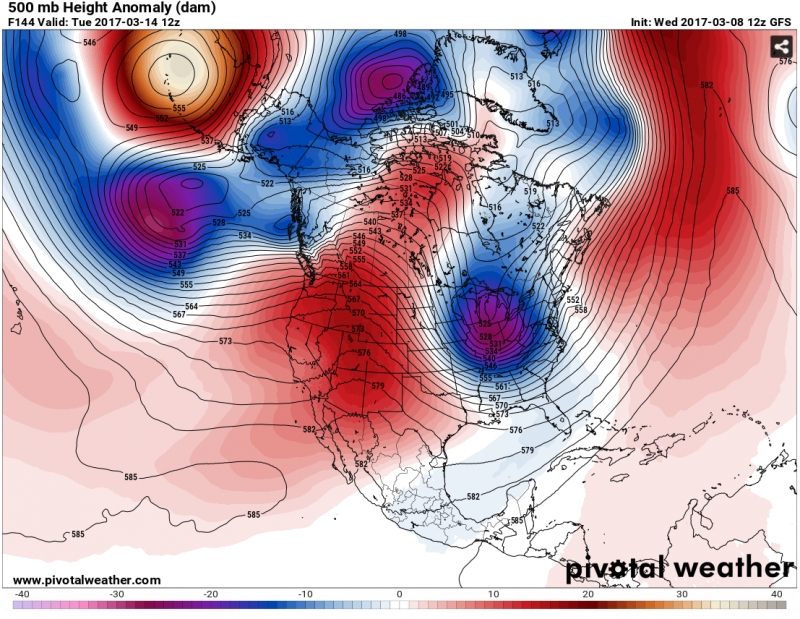STATUS: IOP WATCH
We continue to watch the event taking shape for the time period of 24-26 Mar.
This wave is just a minor feature about 1000 mi west of the California coast this morning. And so how it takes shape depends a lot on the details of the flow in the jet that is beginning to interact with this wave. It will be a day or two until the system advances into the denser observing network on the North American continent.
The models generally agree that a significant wave will pass through northern AL between Friday evening and Saturday night. The devil is in the details. The timing of the passage will make a big difference on how much CAPE builds up with daytime heating. The intensity in the southern portion of the wave, in the lower Mississippi Valley, will make a big difference on the low-level flow, which impacts the rate at which moisture returns in low levels and CAPE develops, as well as the intensity and direction of the shear in the lowest 3000 ft or so. That in turn affects tornado potential. And all of these details factor into the mode of the storms… supercells, Quasi-Linear Convective Systems (“QLCS”… or squall lines), or something different.
For the NOAA P-3 aircraft, the questions are even bigger. Because the aircraft can roam all across the Southeast, it can potentially observe an event too far west for the ground-based researchers, land and rest the crew, and then observe an event over Alabama. And if the system is slow enough, potentially another round of observations further east the next day.
So the researchers continue to watch the forecast evolve, and think about how soon they need to be in Alabama, what kind of deployment strategies might work best, etc. And with this system there is an additional logistical issue to think about: another wave is following right behind the first one, and may give us a second observing opportunity about 3 days later. So we will have to pay attention to this second system and decide whether to end the IOP (if there is one) around Saturday night/Sunday, or stay in Alabama for another observing chance toward Tuesday or Wednesday.
Never simple. Never clear.


